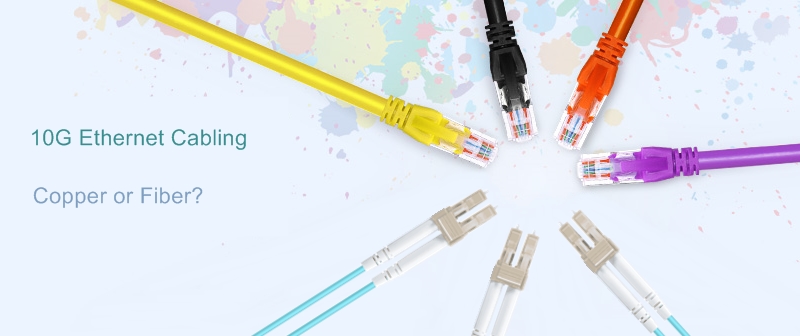Speaking of 10G Ethernet, you may immediately contact 10G fiber optic cabling. The 10 Gigabit multimode optical cable can support 10 Gigabit applications up to 550m and Gigabit applications up to 1100m, and has become the best choice for users’ backbone wiring or fiber to the desktop. In terms of application, 10GBase-SR based on OM3 optical cable is the lowest price option among all the solutions to realize 10G 10 Gigabit Ethernet. It has been proved that better cabling will give users a greater return on investment.
So what are the current standards and status quo for copper 10G Ethernet with different opinions? Let us take a closer look at the process and status quo of standard development and look forward to the near future.
The Development History of IEEE802.3 10GBASE-T Standard
In November 2002, the IEEE 802.3 10GBase-T research group was formally established, which opened the prelude to the development of 10G copper cabling standards. Although the study group was originally designed to support 10Gbps transmission over Category 5e cable, in the process we found that at least Category 6/Class E performance was required.
However, the maximum distance that can support 10Gbps transmission over Category 6/Class E cables has not yet been determined (minimum target is 55m). The IEEE committee has actively explored these issues and combined ISO and TIA cable standards to unify cable channel specifications. The IEEE committee has worked tirelessly to improve the specifications of the cable channel.
In the past few months, much progress has been made in determining cable requirements (in ISO/IEC and TIA/EIA) so that transceiver design work can be based on a feasible cable performance model. The IEEE unanimously agreed at its January 2004 meeting the channel minimum requirement based on Category 6 extrapolation to 625MHz. At the IEEE meeting in March, the channel specification requirements were reconfirmed and the Alien NEXT series specification requirements were added.
The establishment of the IEEE task force in March 2004 marked the culmination of a one-year IEEE study group aiming to determine the goals of 10GBase-T. The IEEE task force clearly recognized the strong preference for UTP cable systems that avoid the shielding and grounding complexities of shielded cables. When the IEEE task force was formed, the target performance for a 100m 4-connector channel was based on a Category 6, Class E channel performance parameter extrapolated to 625MHz with the Alien Crosstalk (crosstalk from adjacent channels) specification.
Channel Specification Requirements for UTP Solutions Supporting 10GBase-T Performance
With the establishment of the IEEE task force, 10G Ethernet will run on twisted pair copper cables, bringing new development opportunities to the entire network field. In order to realize the “massive market potential” (one of the main purposes of the IEEE task force), the main challenge of the task force is to develop the specification requirements of a complete solution including electronics and cables to ensure 10Gbps performance.
Although we expect Category 6 cables to be capable of supporting 10GBase-T (with a distance limit of 55m), the IEEE task force challenged cable suppliers to develop a 4-connector channel capable of supporting up to 100m with guaranteed extrapolation to 625MHz 10GBase-T solution. Experts and users who want to pay attention to 10G copper cable applications have found satisfactory answers.
